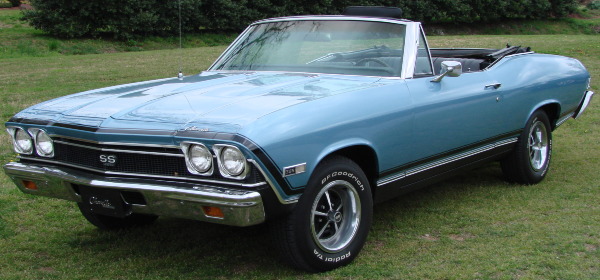Setting aside my esteemed co-writer's obsession with hypermiling, there really is no such thing as a free lunch - especially when it comes to fuel economy. The Government, though, as demonstrated by recently finalized mileage laws, wants their lunch on the house. Unfortunately, there is a fuel efficiency and safety tradeoff we need to be aware exists.
As the saying goes, "you can't legislate innovation", and fuel economy standards give car manufacturers very interesting incentives.
Free Lunch vs. Free Beer vs. the Efficiency and Safety Tradeoff
When people discuss receiving things for 'free', one common retort is "free as in beer, or free as in lunch?". Beer - in a sense - is considered a possible free item. Lunch, on the other hand? Not a free possibility.
The phrase "ain't no such thing as a free lunch" dates back to the early years of last century, but it was popularized both by Science Fiction writer Robert Heinlein and picked up on by Economist Milton Friedman. Friedman's formulation basically said that even though the costs might not be known, they exist - and they might not be monetary. While 'free lunch' offers might come, at best, with a 2 drink minimum (with inflated prices!), at worst they come with some sort of commercial pitch.
The same concept applied to cars? An increased fuel economy might come with reduced car weight or new designs but at the expense of something very important - passenger safety.
Materials Science
In my discipline, Computer Engineering, there is a sarcastic quote often used as an argument during any requirement gathering session: "Cheap, Fast, High Quality. Pick any two.".
I'm no mechanical engineer, but I do know that the fastest way to gain fuel economy is to reduce weight. One EPA study pegs the number at around a 1-2% increase in mileage for every loss of 100 pounds.
Right off the bat, that's where you see the first problem - momentum is mass times velocity. Perhaps a compact car would fare poorly against a larger vehicle either way, but reducing weight and engineering well designed crumple zones can only get you so far. New materials don't necessarily help - deceleration injuries can be just as fatal as crushing injuries. So yes, exotic materials will help - to a degree. But momentum is a physical law which we can't quite bypass (insert your witty Higgs Boson comment here).
So, in a nutshell, early generations of cars working under new efficiency standards will be at a disadvantage to older cars still on the road. One of the funniest things about Cash for Clunkers is the beneficial effect it had on clearing older, heavier cars off the road - there are less hulking anachronisms for compact cars to hit than there were before the program.
Another important thing to note in this discussion is that safety devices themselves add weight. Air bags (which attack that acceleration problem discussed above) are heavy installations - they require an expensive package of materials and a gas propellant which weighs something more than zero pounds. Same for active suspension systems, seat belts, tensioners, and the dozens of other pieces of safety equipment. In fact the only negligible safety equipment weight comes in the software on on-board computers. So, where does a lot of the base weight come from? The frame and superstructure, of course.
Switching from Steel to Aluminum
Take the Ford F-150, for instance.
Ford, in an effort to comply with efficiency regulations, redesigned their truck from the ground up and based their frame design on aluminum, not steel. Now, don't get me wrong - there are some very strong alloys of aluminum (such as the 7000s, used in aviation) - but at the same specification (assumed since the goal is weight reduction) steel is stronger than aluminum. This is on top of that whole momentum thing I discussed earlier.
Will reduced weight necessarily make the truck more dangerous? Yes, but I do expect safety technology to eventually catch up with whatever weight we aim for - but I don't expect it to come for free. (Not to mention, those same safety features would also be effective with current vehicles).
Don't get me wrong: I am in no way saying an F-150 is "dangerous". As one of the larger vehicles on the road, it will still have advantages in a collision with most traffic. I think the largest effects will be on compact, sub-compact and mid-sized cars. In fact, counter-intuitively, perhaps reducing weight in our current bifurcated fuel system (cars vs. light trucks) would actually make driving safer, even if making SUVs and trucks more dangerous?
Quantifying the Increased Fuel Efficiency and Safety Tradeoff
Luckily for us, there was a paper covering this very topic on NBER. Not only does it cover fuel economy changes, but also models driver preference - perhaps a dangerously driving Suburban Mom switched from a compact car to a land beast (making us less safe, in aggregate).
The author's conclusion of the efficiency and safety tradeoff? Every 1 mile per gallon increase in requirements leads to an excess of 149 deaths a year. Currently, cars average 27 miles per gallon. In 2016, the mandate is 34. In 2025? 54.5 miles per gallon (but the measure will actually be closer to 43). You do the math.
Self-driving cars, anyone?
Have you ever considered safety when considering mileage rules? What do you think of the numbers above? Do you think that the benefits in saving fossil fuels, including what may very well be lives saves through indirect effects, are outweighed by increased driving fatalities? Do you better understand the efficiency and safety tradeoff?
Have you ever had a free lunch? How did you pay for it?

